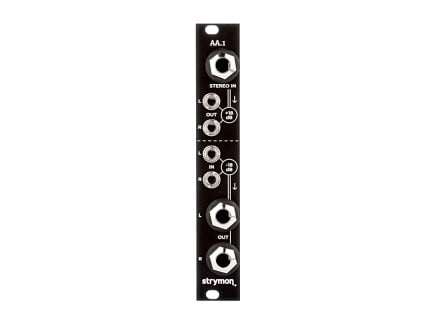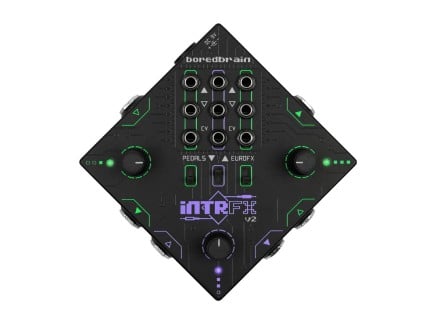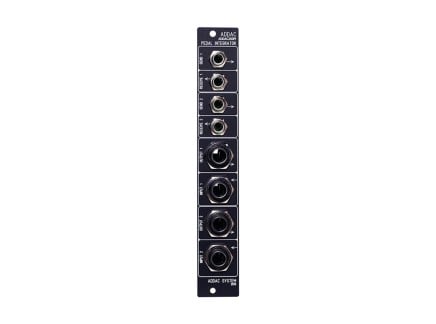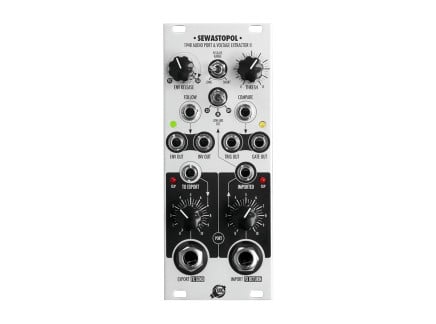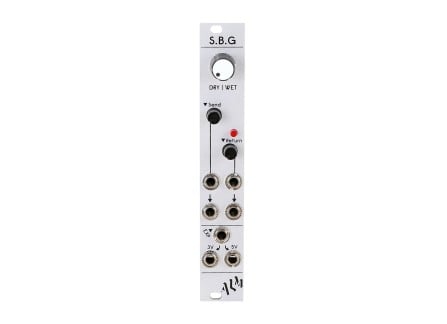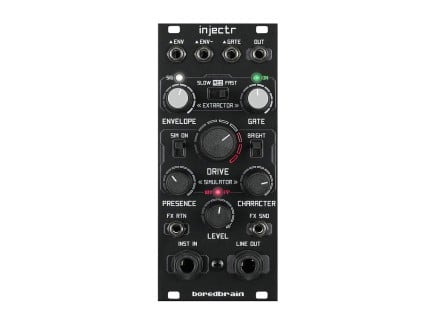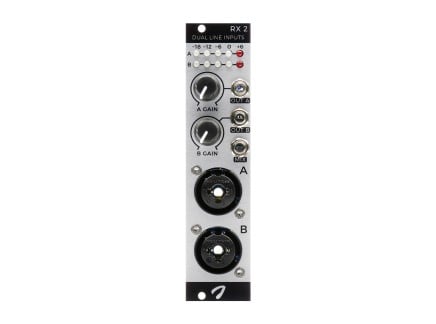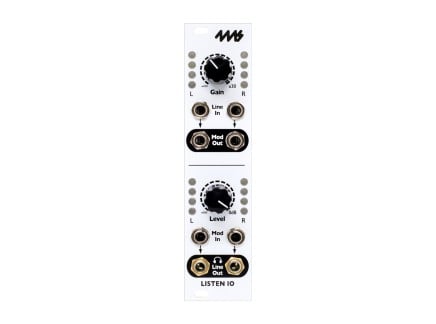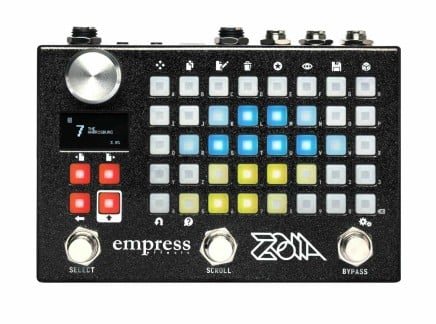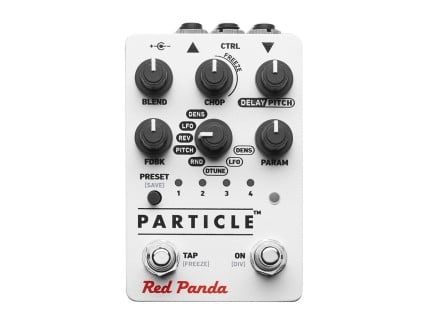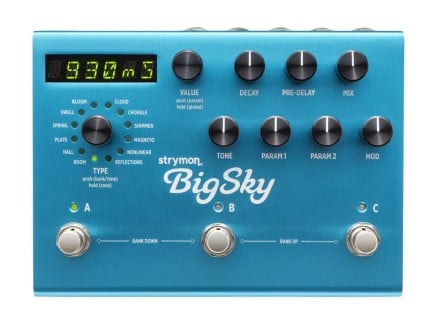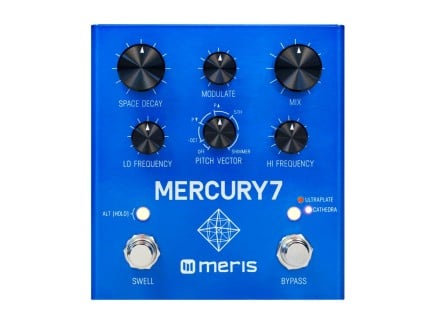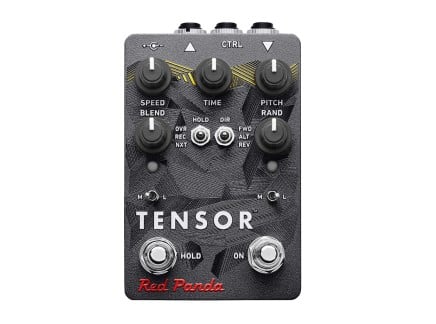It shouldn't come as a surprise that we at Perfect Circuit think that modular synths are awesome—they provide a platform for building a highly personal instrument tailored to your own musical needs. These instruments can even evolve to the point of acting as the sole sound source for entire tracks or performances, with plenty of opportunity for sound generation, processing, and control. Some artists' entire output relies on modular synthesizers alone. In fact, for many, the idea of creating a complete piece/performance/album on a modular synth alone has become a sort of aspirational ideal.
While this holistic approach can absolutely be rewarding and inspiring, however, it is important to remember that it is not the only option for being creative with modular synths. We quite often see new modular synthesists gradually shed their attachment to other gear and techniques in search of the ideal all-in-one music making solution; and of course, this sometimes works out just fine. But sometimes, an approach that draws from broader resources can be every bit as inspiring and unique as a modular synth alone.
We've been having a lot of fun lately pairing "guitar" pedals with modular gear. For a long time it seemed as if the Eurorack world was developing into weirder sonic territory much more quickly than the pedal world—but now, there are plenty of pedal makers pushing boundaries into the esoteric corners of sound design. Today, many pedals present sonic possibilities uncommon in the world of modular synths; some present familiar ideas in novel ways; and some simply have a sound so compelling that they are difficult to pass by. And of course, pedals are an excellent way to offload processes that you don't always need in your synth, so that you can more easily add/remove functions than would be practical with dedicated modules. Along these lines, it's also great to have options for sonic expansion without needing to completely rearrange a Eurorack case—and without the need to approach the tough (and expensive) question of when to buy a bigger rack.
Whether using guitar pedals to augment your modular synth or adding in a few modules to complement your pedalboard, interfacing modular synths with pedals is an excellent way to explore new sonic territory...but there are some things to keep in mind as you join these worlds together. Let's talk details so that you're prepared for all the questions you'll encounter when deciding how to pair your pedals with your semi-modular or modular synthesizer.
Signal Level Basics
One of the most important considerations—signal levels. You might remember from our article on connecting Eurorack and line-level gear that signal levels in different corners of the audio world can vary drastically. Microphones produce different signal levels than electric guitars; electric guitars produce different levels than keyboards and drum machines; modular synths produce different signal levels than all of these. Knowing how best to connect different types of gear together can be a bit mind-boggling, but it is now part of the craft of being an electronic musician.
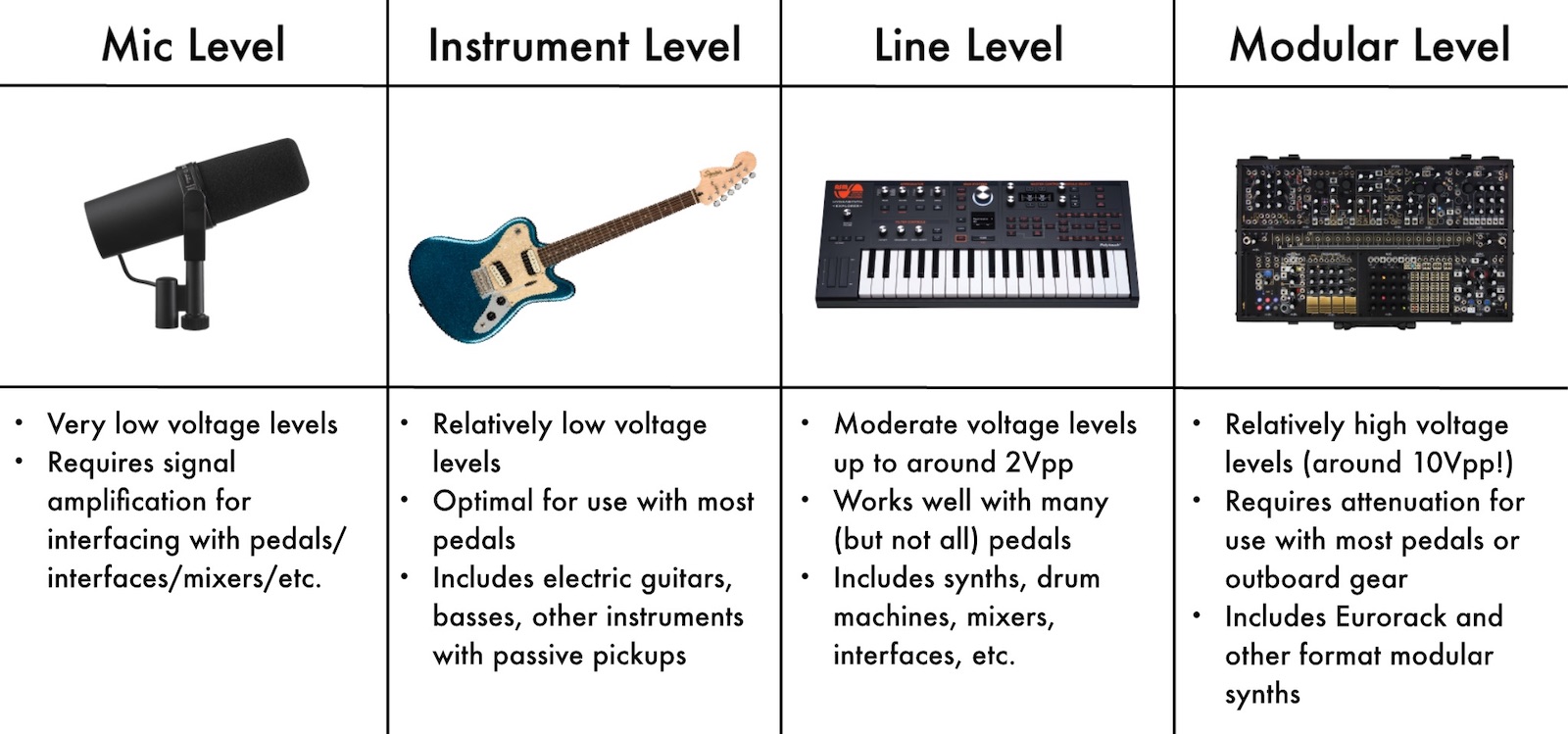
In this particular scenario, the most important thing to remember is that Eurorack signal levels are usually much higher than the levels that effects pedals expect to receive. Pedals are usually designed to receive signals from electric guitars (whose pickups have particularly low output levels) or other sources like keyboard synths and drum machines—which have somewhat higher output level, but not nearly the level of modular synths.
The safest bet for connecting your modular gear to effects pedals is to use a dedicated output interface module in order to get your modular synth's output down to instrument or line level. Depending on your purposes, any number of different things could fill this role—but perhaps one of the most common solutions is a dedicated insert interface, which simultaneously allows users to scale down signals to be sent to their pedals, and to scale up signals coming from their pedals. Let's explore this idea, as well as some alternative solutions.
Eurorack + Pedal Interfacing Tools
There are tons of modules that can do this! Perhaps the most straightforward options are Strymon's AA.1 or ADDAC's 200PI, which can be used to get stereo signals into and out of a modular system with fixed attenuation levels—producing precisely the signal levels that each type of gear needs to work optimally. The Retro Mechanical Labs GPI is another module in this vein, adding attenuation controls to the outgoing signal level for fine-tuning your signals for use with external effects (often a huge asset for processors like fuzz or distortion, where incoming signal level has a profound impact on the resulting signal). If what you need is a quick and easy way to convert signal levels both directions, these modules will work spectacularly.
Some other pedal interface modules additionally include a built-in control for outgoing wet/dry mix. Malekko's SND/RTN is personal favorites for this sort of processing, providing 1/4" send/return I/O for interfacing with your pedals and both manual and CV control for Wet/Dry FX mix, making it an excellent choice for inserting external pedal effects virtually anywhere in your modular synth's signal chain. ALM's SBG and Doepfer's A-138d are other similar options, providing the same interfacing functionality as the SND/RTN, but without CV control over the wet/dry balance. SBG also adds some interesting tools for using CV to control your pedals via their expression pedal inputs—a feature which we'll discuss in depth in a forthcoming article.
All of the modules described above offer more or less basic input/output functionality, but others add in some extra functions that can make working with external effects a bit more interesting. One such module is the XAOC Devices Sewastopol II. Sewastopol provides the same type of input and output controls, but adds an envelope follower and comparator. This provides users the option to generate control voltages and gates that correspond the loudness of incoming signals—an excellent way of creating organic modulation and timing signals to help the modular system feel overall more in sync with external processes.
Of course, while input amplification of pedal signals is important when adding signals into arbitrary parts of your synth signal flow, for many applications, a simple output interface will suffice. For instance, if you're just looking to add an end-of-chain delay or reverb to your synthesizer, you probably don't need the input amplification stage of a SND/RTN, SBG, or similar module. Instead, you could look to something as simple as an Erica Pico Output, Intellijel Outs, or even just a simple attenuator or VCA to tame your outgoing signal levels before hitting the pedal(s) in question.
Sometimes, of course, adding an extra module to perform these interfacing tasks isn't a possibility—either because you're out of room in your Eurorack case, or because you're working with a semi-modular instrument...meaning that you don't have the easy ability to add new modules without the entirely separate task of buying a Eurorack case. Luckily, there are solutions for these scenarios as well—perhaps most notably, the BoredBrain INTRFX and Transmutron. Boredbrain Music has developed a number of clever patching utilities for pedalboards, and these two offerings are no exception.
INTRFX provides three Eurorack/Pedal interface channels in a single enclosure, making it easy to either add Eurorack effects into your pedalboard or to add pedal FX into your Eurorack signal flow—and it even offers manual and CV control over FX Wet/Dry blend (as with the Malekko SND/RTN module, described above). Boredbrain's Transmutron (now discontinued) is another clever signal routing tool—a combination dual FX loop/two-way crossover filter designed to allow you to separate the high and low frequencies for parallel processing. It features both Eurorack and line/instrument-level inputs, allowing you to merge these two worlds in a somewhat more novel way than the INTRFX alone. All that to say, there are definitely tools out there for helping you interface between modular synth and pedal ecosystems without necessarily needing to add new modules to your setup, or to buy a new case if things are cramped.
The Important Questions: Safety + Sound Quality
So naturally, buying a module or pedal for the purpose of scaling signal levels isn't always compelling when money could be spent on something more overtly exciting—after all, many of these modules' prices are in the same range as some pretty rad oscillators, filters, effect processors, etc. So it's important to face another big question...what if you—*gasp*—don't use a pedal interface module for connecting your pedals to your Eurorack system?
The most important facet of this question: are you going to hurt something if you connect a modular-level output into a pedal's input? The answer is "probably not...but maybe." Not all pedals are designed in the same way, nor are all modules—so it's conceivable that there are combinations of modules and pedals that won't get along if directly connected to one another. In the worst case, this could cause damage to the pedal. If you send signals from the modular that are higher than the pedal expects, certain components of the pedal could fail—and without really seeing the inner workings of the pedal, it's difficult to predict where problems might occur. Happily, the more realistic answer is that, in many situations, things will be okay—but it's generally better to play it safe. At very least, it's advisable to use at least a VCA or basic attenuator (or a dedicated output module) to scale your signals down before sending them into a pedal. If this is your approach, start with your attenuator turned all the way down and gradually increase the level until you reach a pleasant response, keeping your ears alert as you go.
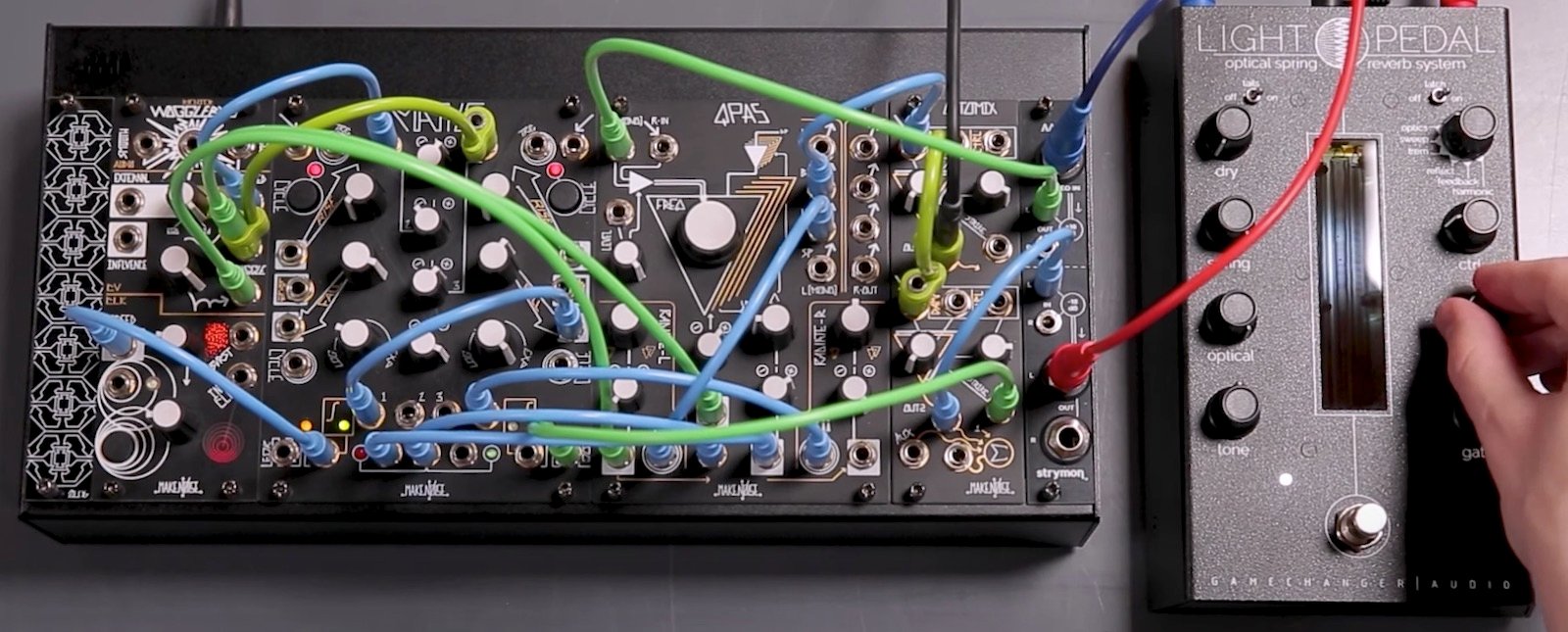
A more nuanced, but related question: is it going to sound good if you plug a modular-level output into a pedal input? In some situations, things won't sound great right off the bat. As mentioned in our discussion about connecting your computer and modular synths, most commercially available music gear doesn't leave quite enough headroom to account for the high signal levels that come from Eurorack synths. Depending on the effect, this can have pretty significant ramifications on overall sound quality.
For instance, if your effects are at all based on incoming dynamics, a straight Eurorack signal is most likely not going to yield the response the pedals are designed to provide, largely because guitar has a much more distinct and varied dynamic profile than do the typical modular synth patch. Because many types of guitar processors are developed in order to respond to a player's natural dynamics, getting similar results out of a modular synth can require fairly nuanced patching techniques. Without taking this into consideration when building your patch, distortion and fuzz effects can lose a lot of their nuance; envelope filters or other dynamics-based modulation effects will go from zero to 100% far more easily than with instrument-level input; and some effects may even clip the incoming audio in an unintentional way. While this may not have much of an impact on spatial effects or many types of modulation effects, it can be dramatically different with dynamically responsive or amplitude-based effects—sometimes even masking the character of an effect in profound ways, leading to kind of lame results that don't represent the pedal's true capabilities. (Again, carefully tuned attenuation is your friend here.)
The same goes for audio going the other direction: while technically you can plug a pedal's output into a modular system's input, odds are that things aren't going to sound as good as they could. Since Eurorack processors typically expect much higher voltage ranges at their inputs, amplitude-dependent effects often won't manifest in ideal ways, making things difficult to balance. Compensating for those level changes further downstream can result in unnecessary noise as well—so it's generally advisable to use some form of input amplification directly between virtually any type of external gear and a Eurorack system. This could come from any number of the interfacing modules we discussed above, or from any module capable of high levels of signal amplification, such as preamps like Doepfer's A-119 or Expert Sleepers's Little Mikey.
Additional Considerations: Frequency Range
A further matter to keep in mind is that many effects pedals are intended to process signals in a specific frequency range, often at the expense of signals outside that range. Pedals designed to work within the typical frequency range of a guitar may not sound great processing signals below or above the guitar's reach. All too often I've encountered pedals that sound excellent processing guitar, vocals, or winds, but sound kind of lame with full-range signals from a synth or keyboard.
It's a little bit difficult to predict when this problem will emerge. It is fairly common with highly frequency-dependent effects (like filters, for instance) which are tuned to provide pleasant response within the relatively limited frequency range of the guitar, but can come up in other situations as well. Happily, many pedal manufacturers are now much more conscious of producing effects that will sound great regardless the input signal.
Earthquaker Devices, for instance, intentionally crafts their pedals to work with full-frequency-range signals. And happily, EQD produces a huge range of effects, from classic-style distortions to outrageous reverbs (Avalanche Run!) and absolutely bonkers, idiosyncratic effects. Maybe it's just an indication of my own taste, but I can't imagine a synth setup that wouldn't benefit from a Rainbow Machine.
Electro-Harmonix is another excellent go-to for weird, synth-compatible processors (we've had a ton of fun pairing pedals like the outrageous Oceans 12 with modular). Of course, EHX also produces a handful of standalone boxes specifically for generating control voltages and clocks (e.g. 8-Step Program and Clockworks—but we'll dig into the details about control voltage and "guitar" pedals in another article soon).
And of course, one of the most ubiquitous current pedal brands is Strymon—whose effects are broadly known to sound great with synthesizers. Many musicians have paired a Nightsky or a Volante with their Music Easels or Euro systems; and of course, their AA.1 (mentioned above) and Magneto are clear indications that Strymon has their eyes on the needs of modular synthesists.
In the end, many manufacturers do not specify the intended frequency range for their effects—so keep in mind that, when planning what pedals to add to your system, some things like filters or EQs may not have the range that you're used to in pure modular format. And of course, also keep in mind that the brands mentioned are by no means the only ones making great pedals for synthesizers: we'll continue to explore more ideas about integrating pedals and synths, including explorations of products by companies like Fairfield Circuitry, Meris, Gamechanger Audio, Red Panda, Chase Bliss, and more.
An Ongoing Conversation
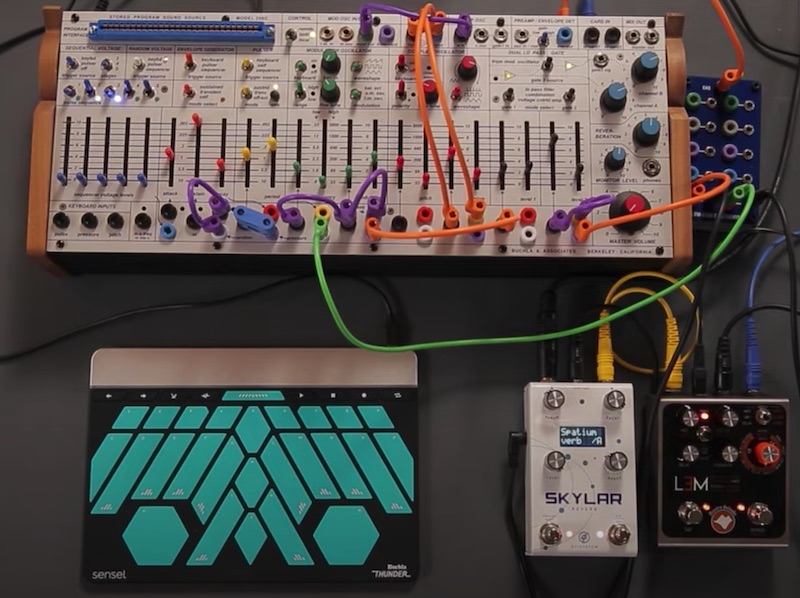
Once simple considerations like signal levels and frequency range are taken into account, using guitar pedals with modular synths can become an exciting way to find new sounds and to make your personal setup even more unique. In the end, it's possible to use any two types of gear together...so understanding how to connect things together can lead to exciting and unique discoveries. When not limiting oneself to obvious/straightforward answers to creative problems, it becomes possible to find undiscovered sonic territory—so next time you feel your music needs something new, look outside your zone of comfort—you might find a perfect solution.
We'll continue to offer ideas about how to merge the art of modular synthesis with the world of effects pedals—so keep your eyes peeled for more!


